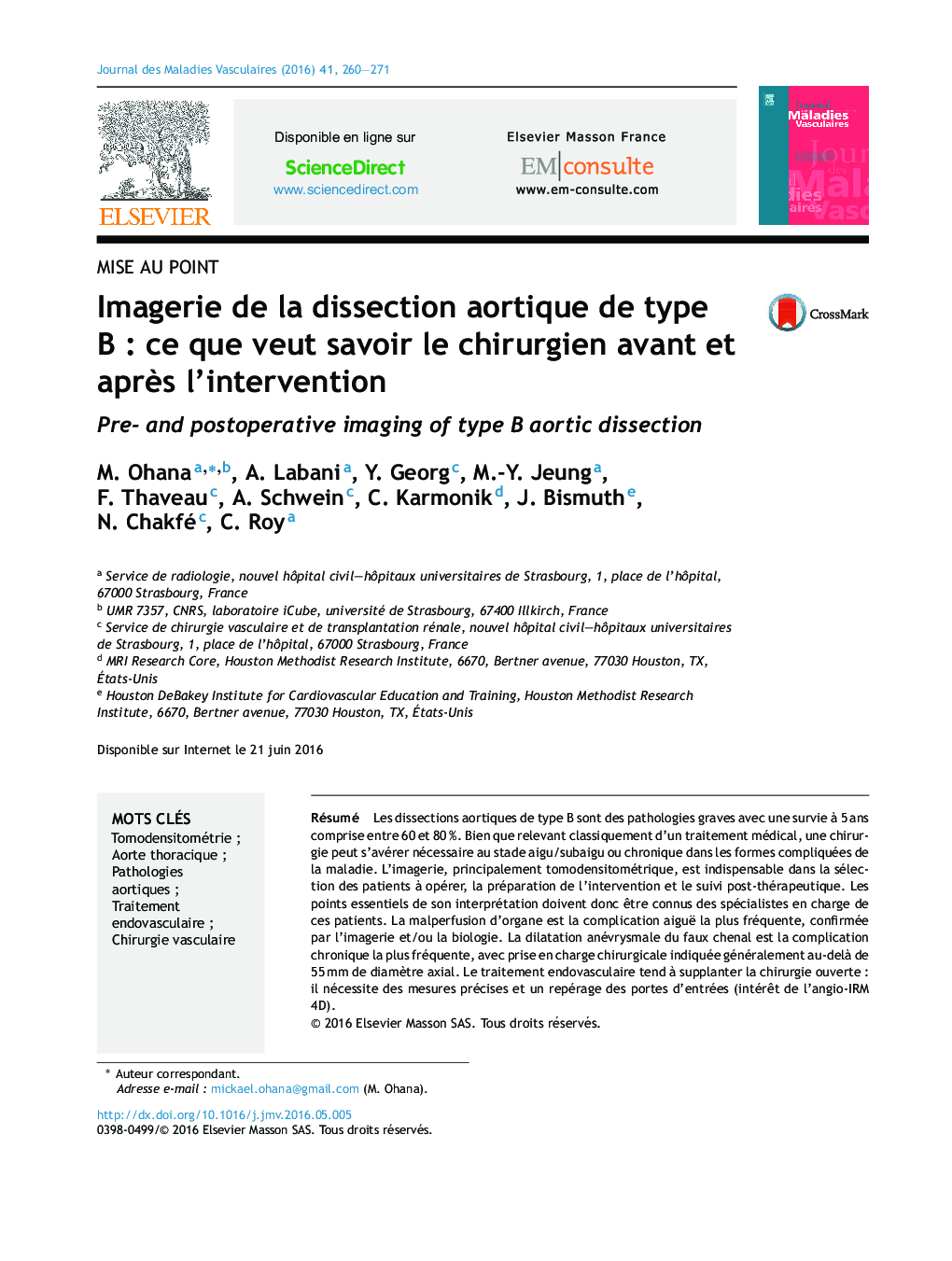| Article ID | Journal | Published Year | Pages | File Type |
|---|---|---|---|---|
| 2974075 | Journal des Maladies Vasculaires | 2016 | 12 Pages |
Abstract
Type B aortic dissections are serious diseases with a 60Â to 80Â % 5-year survival rate. Although typically managed with a medical treatment, surgery may be necessary in the acute/subacute or the chronic phase if significant complications are encountered. For these patients, CT angiography is the first-line imaging modality, used for indicating and preparing the surgical procedure as well as for follow-up. Physicians in charge of these patients should be familiar with the key reading points. Visceral malperfusion is the most common acute complication, while aneurysmal dilatation of the false lumen is the most common chronic complication, with surgical management generally indicated when the axial diameter of the aorta exceeds 55Â mm. Endovascular treatment tends to replace open surgery: it requires precise measurements and identification of the entry tear (contribution of 4D-MRA).
Keywords
Related Topics
Health Sciences
Medicine and Dentistry
Cardiology and Cardiovascular Medicine
Authors
M. Ohana, A. Labani, Y. Georg, M.-Y. Jeung, F. Thaveau, A. Schwein, C. Karmonik, J. Bismuth, N. Chakfé, C. Roy,
